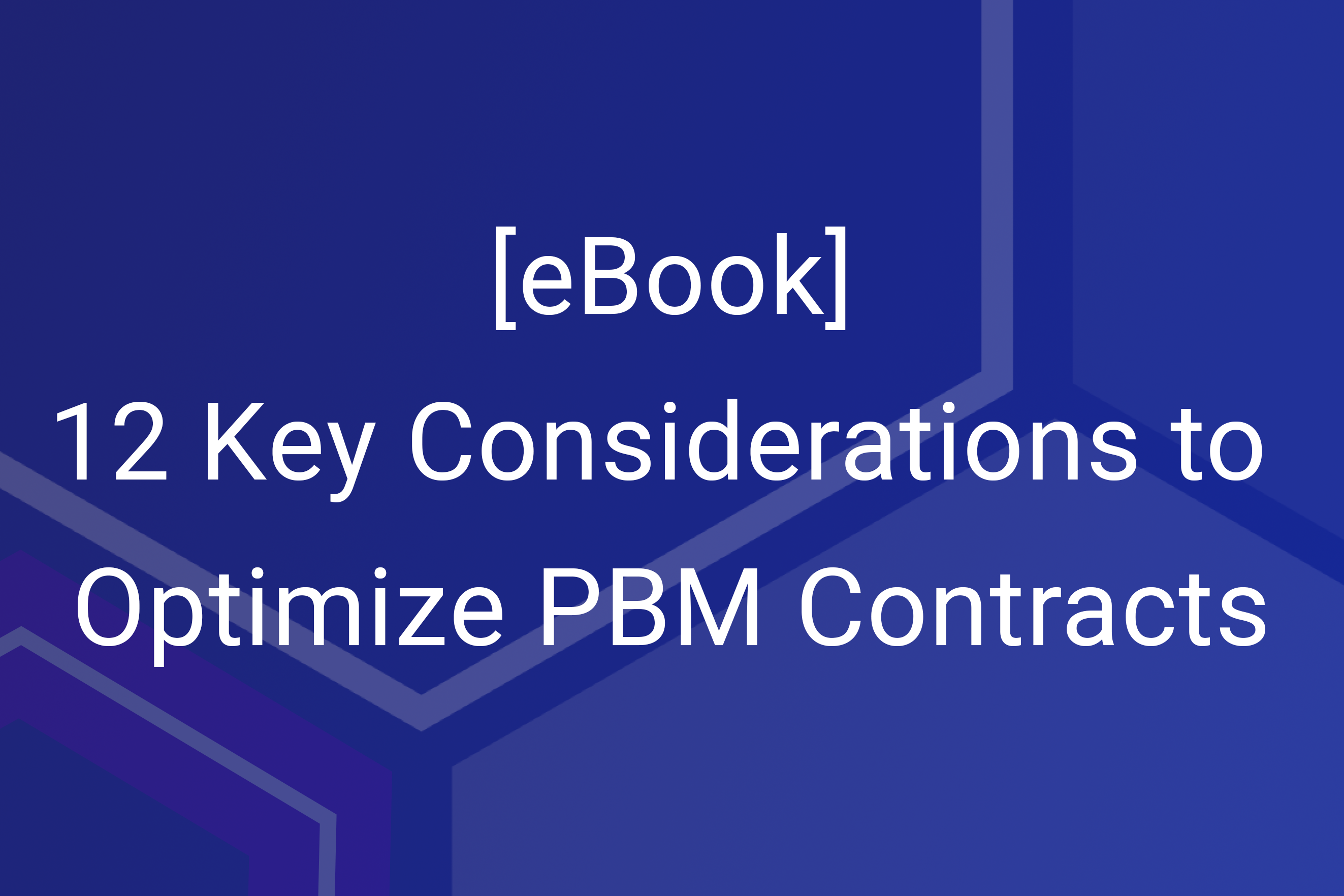[This is the second blog in a three-part series exploring how member-centricity is the crux of a productive pharmacy benefits strategy. Read part one here and part three here.]
Put simply, a member-centric pharmacy benefits strategy means that your unique population needs are at the center of your program – driving affordability, access, and adherence for all. For example, a company populated with financial analysts could have a very different set of coverage needs than a manufacturing firm. With a member-centric approach, brokers and plan sponsors can use data to customize their plan to meet the unique financial and coverage needs for their specific organization.
The most powerful way to support a member-centric approach is to first harness member claims and market data. This information can then help plan sponsors:

- Take control of their organization’s pharmacy benefits contract
- Leverage insights to manage ongoing and future program performance
- Support and influence positive member behavior
By framing your pharmacy benefits strategy around the three pillars in our graphic, you’ll construct your program around the member, thus leading to a more cost-effective and accessible pharmacy program.
Pillar 1 – Procurement: Take control of your pharmacy benefits contract
Pharmacy costs represent nearly 10% of overall healthcare spend, yet pharmacy is the only employee benefit that can be negotiated on a per unit cost basis. This means that a pharmacy contract is a rare opportunity to control overall healthcare spend. Negotiating a contract that fits your organization’s needs through a competitive bid or RFP process leads to better control of the broader cost containment strategy.
Why go out to bid?
A common misconception is that if a company is satisfied with its PBM vendor, they should not go out to bid to consider other vendors. However, by engaging in a bid process, organizations can create a competitive environment that leads to greater price transparency and ultimately better plan options—including strong renewal offers from the incumbent.
Creating competition among PBM vendors drives value
Contracts from vendors can vary widely, are complex, dense, and require deep expertise to analyze accurately. In evaluating potential PBM partners, it is important to first identify what requirements are the most important for your specific population. Use those criteria to determine which vendors to include in your RFP process. Then, through the use of third-party PBM procurement technology, the bid terms can be normalized across bidders. When these data are compiled by an agnostic third-party, the result is a side-by-side comparison of PBM contracts, broken out by valuable program features like specialty spend, rebates, and overall drug spend. This agnostic view also allows for a standardized comparison of important contract elements like performance guarantees and lists.
All said, by leveraging bid technology to analyze your unique member claims data, your pharmacy contract will realize savings that promote objectivity, clarity and simplification – without compromising choice.
Pillar 2 – Insights: Leverage insights to manage ongoing and future program performance
Even when you select a PBM contract that is cost-effective and mapped to your member’s needs, external market forces and changes in member complexion can affect utilization and spend. Maximizing your pharmacy benefits strategy throughout the life of the contract requires ongoing monitoring, management, and optimizations.
Monitor contract adherence and performance guarantees
Oversight of a PBM contract ensures that the agreed-upon terms of the contract are met – including both pricing and performance guarantees. Some metrics that are critically important to monitor include: pricing variance, pricing guarantees, rebate analysis, total number of claims, overall spend, and specialty spend, to name a few.
Readjudicating 100% of your claims (independently and frequently) positions you to detect errors and unexpected costs in advance of a year-end reconciliation. Leveraging an automated, independent platform makes this process seamless and can result in significant dollars saved.
Anticipate the impact of external market dynamics
Shifts in your workforce population, the new availability of novel drugs, changes in legislation, or a global pandemic can impact your PBM contract. Monitoring and understanding any potential shifts in definitions or MAC, specialty, or Limited Distribution Drug (LDD) lists is critical to avoid unforeseen costs and protect members’ ability to access the medication they need.
Reveal optimization opportunities
Utilization data can create opportunities to improve your plan mid-contract, at a market check, or at the time of renewal or procurement. Review your spend by specialty, generic dispensing rates, high-cost drugs, chronic versus acute drugs, and therapeutics classes. Drilling down into these arenas can pinpoint formulary, exclusion, and guarantee optimizations or adjustments that can reduce costs for both the organization and the member. For example, sometimes it’s as simple as discovering a low-cost generic for a drug used by many members.
Simply put, pharmacy program management should not end after a contract is signed. Leveraging technology and partnering with third-party pharmacy experts can support the ongoing management of a member-centric program that informs decisions with data.
Pillar 3 – Engagement: Support and empower positive member behavior
Outside of pharmacy contract procurement and management, supporting productive member behavior is also a core tenet to achieving a member-centric program and realizing savings. Specifically, organizations should empower members to make informed decisions when they fill a prescription.
Members who don’t understand their benefits are less likely to comply with plan design – which results in costs to the organization. In a recent survey, 66% of employees indicated that they want their employer to provide more education and communication around their health benefits. If members have the right support to compare drug prices and navigate their benefits, they can find prescriptions with the lowest out-of-pocket cost and a potentially lower cost to the plan. When members are confident in their ability to access and afford their benefits, they’re more likely to use their benefits and adhere to treatment. For members accessing prescriptions for the first time, educational and member engagement tools can increase adherence up to 75%*, which leads to better health at a lower price– the core goal of a member-centric program.
The pharmacy benefit landscape is constantly evolving, but one constant is the need to place members at the center of PBM plan design. A member-centric approach that leverages data, technology, and expertise will drive better PBM contracts, deeper insights, and increased member engagement. This strategic approach helps plan sponsors better manage their program throughout the benefit lifecycle and ultimately, serve their people while controlling healthcare costs.







